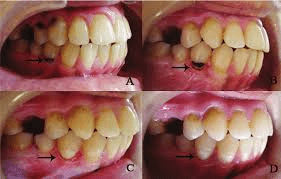Laser Gingivectomy
Lasers are becoming standard equipment in the dental practice and are used as a principal instrument or adjunct in many treatment plans, including gingivectomy procedures.
Gingivectomy, the excision or removal of gingiva, is clinically indicated to reduce infection and decrease the depth of the gingival sulcus in patients who are unsatisfied with their “short” clinical crowns.
Which Wavelength is most suitable for laser gingivectomy?
Various therapies require different laser wavelengths due to the nature of how tissue reacts. A common application for soft-tissue lasers — including diode models that operate at wavelengths between 810 and 980 nanometers (nm) SIFLASER-3.0 — the laser gingivectomy procedure.
Laser doesn’t only facilitate treatment but it also has the potential to improve healing. Advantages over conventional methodologies include improved precision and visualization for operators, and less discomfort for patients. Lasers are becoming an adjunctive treatment methodology, as well as a stand-alone addition to the dental armamentarium.
The advantages of laser application are that it provides relatively bloodless surgical and post surgical courses with minimal swelling and scarring. Diode lasers have been demonstrated to be safe and effective with an excellent tissue healing response.
Laser offers precise cutting capability, eliminating the need for a surgical blade. Additional benefits of the laser included hemostasis of tissue that allowed excellent clinical visualization during the procedure (including the outline of the new gingival margin position), and improved patient comfort. Ultimately, the patient reported being satisfied with the initial overall results.
The use of lasers as an adjunctive or alternative option may facilitate treatment and has the potential to improve healing. Potential advantages over conventional methodologies include improved precision and visualization for operators, and less discomfort for patients.
Reference: A Gingivectomy Procedure Using a Diode Laser.

[launchpad_feedback]
Although the information we provide is used by different doctors and medical staff to perform their procedures and clinical applications, the information contained in this article is for consideration only. SIFSOF is not responsible neither for the misuse of the device nor for the wrong or random generalizability of the device in all clinical applications or procedures mentioned in our articles. Users must have the proper training and skills to perform the procedure with each diode laser device.
It is imperative to instill laser safety regulations within your facility. Note that it is a requirement to follow ANSI (American National Standards Institute) and OSHA (U.S. Occupational Safety and Health Administration).

